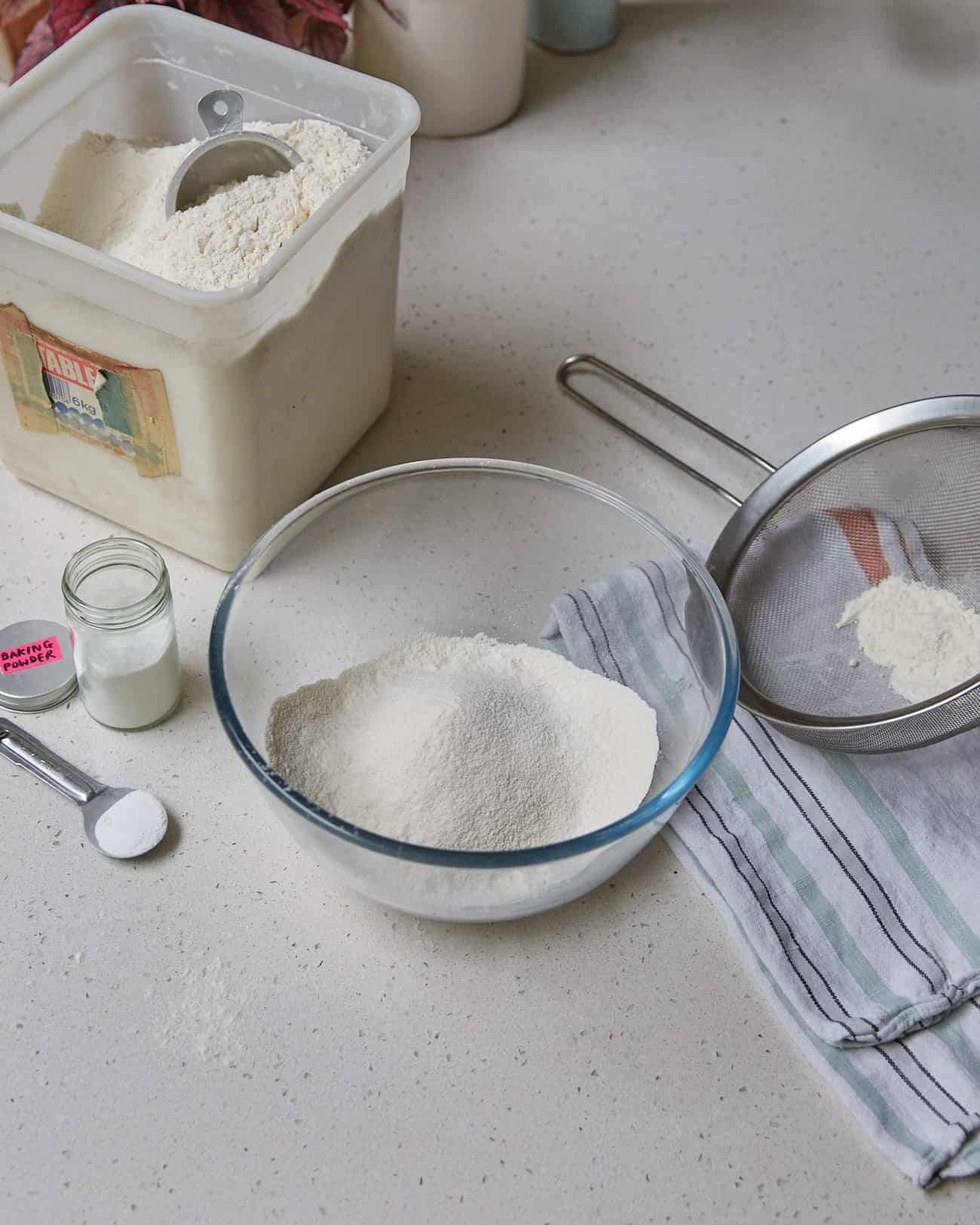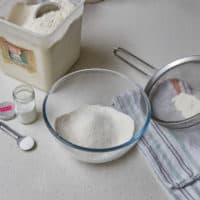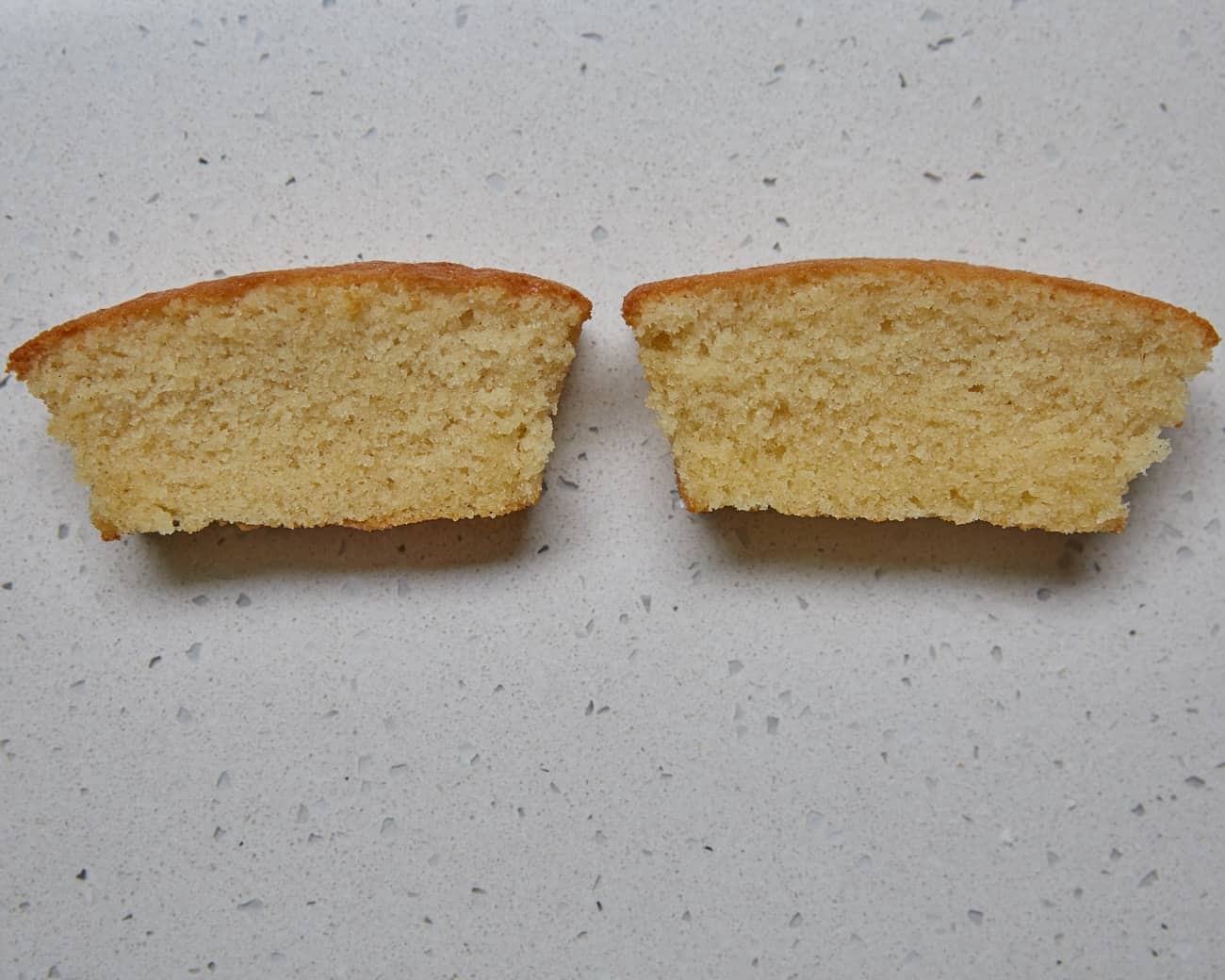
Self-raising flour (a.k.a. self-rising flour in the US) is a common ingredient in English baking recipes, typically used for scones, pancakes and Victoria sponge cakes. It is simply a pre-mixed combination of raising agents and flour so that you don’t need to add baking powder or bicarbonate of soda to your recipe.
Here I’ve provided an alternative to shop-bought self-raising flour which you can make using 2 simple ingredients: plain flour and baking powder

How to make self-raising flour
Ingredients
To make 100g self-raising flour
- 95 g plain white flour (all-purpose flour)
- 1 ¼ tsp (5g) baking powder
OR To make 1 cup (US) self-raising flour:
- 116 g (1 cup minus 1 ½ tsp) plain white flour (all-purpose flour)
- 1 ½ tsp (6g) baking powder
Instructions
- Place the flour into a metal sieve (strainer) set over a bowl. Add the baking powder on top and sift both together into the bowl.
Notes
- Make sure you're using level teaspoons
- 1 tsp = 5ml
How much baking powder do you need to make 100g self-raising flour?
The ratio for self-raising flour is that for every 75g plain white flour you must add 1 tsp (4g) baking powder.
As 1 tsp of baking powder = 4g, mixing it into 75g of flour gives you 79g of ‘self-raising flour’. This can make calculating quantities for your recipe a bit tricky so, to make things simpler for your conversions, I’ve calculated that to make 100g of self-raising flour you must combine 95g plain white flour and 1 ¼ tsp (5g) baking powder
Shop-bought self-raising flour vs. DIY self-raising flour

I tested a small batch of a standard Victoria sponge cake recipe using my homemade replacement flour mix vs. shop bought. I used all the same ingredients (apart from the flour, of course) and baked the mini cakes in the same oven at the same time. You can see that they look pretty similar in rise, crumb structure and colour. There was no difference in flavour either.
Why use self-raising flour?
- The advantage of it is that if you bake infrequently, you won’t need to buy raising agents separately so you can save some money and some cupboard space. The flour and raising agents are also pre-mixed for you so you don’t have to worry about the raising agent incorporating properly into your other dry ingredients.
- The disadvantage is that you don’t have the same level of control over the rise of your bakes as self-raising flour has a standardised level of ‘rise’ it produces. Because of this, you can only use self-raising flour in recipes which specifically call for its use. I usually don’t bake with self-raising flour as it takes up too much room in my pantry so I prefer to just have plain flour (which is more versatile than self-raising) and baking powder to hand and mix up a DIY self-raising flour when needed.
What is in self-raising flour?
Typically in the UK, self-raising flour contains plain white flour (usually with a low protein content i.e. ‘soft wheat’) with chemical raising agents mixed in. In most cases, the raising agents used are a mixture of monocalcium-phosphate (an acid) with sodium bicarbonate (an alkali) which will react together in a neutralisation reaction in the presence of liquid, producing carbon dioxide gas. This gas is what produces the bubbles needed to make cakes and biscuits rise.
What happens if I use plain flour instead of self-raising?
If a recipe calls for self-raising flour it is doing so because it is relying on the raising agents in that flour to make the baked good ‘rise’. If you use plain flour instead and don’t add any raising agents you will most likely end up with a very flat, dense bake! However, if you add baking powder to your flour in the proportions given above you won’t have that issue.
What is self-raising flour used for?
Mainly sweet baking recipes where the raising agent is needed to provide lift e.g. Victoria sponge cake, scones, Scotch pancakes, biscuits. It is also used in some flatbread recipes. However, it shouldn’t really be used in recipes where yeast is included as the yeast is meant to provide the ‘rise’, not the flour.
Does self-raising flour go off?
Self-raising flour can expire due to the raising agents within becoming inactive. This doesn’t make it unsafe to consume but it does mean that your baked good won’t rise. This is why I like to make my DIY self-raising flour just before I’m about to bake something – that way if I know that my baking powder is a bit old, I can test it before mixing it into my flour. ‘Testing’ your baking powder just involves mixing it with some white vinegar and seeing if it fizzes. If it does, you’re good to go. If not, the baking powder is expired and you’ll have to throw it away is it will no longer be useful. You can also check the expiry date given on your baking powder packaging as this should tell you if it’s super old (and thus likely to be expired!).

